Visible-light-irradiated tandem sulfonylation/cyclization of indole tethered alkenes for the synthesis of tetrahydrocarbazoles
Yingjie Yu, Aiyao Liu, Jingrui He, Chengting Wang, Haibo Mei , Jianlin Han
Jiangsu Co-Innovation Center of Efficient Processing and Utilization of Forest Resources, International Innovation Center for Forest Chemicals and Materials,College of Chemical Engineering, Nanjing Forestry University, Nanjing 210037, China
Keywords:Visible-light-irradiation Sulfonylation Tetrahydrocarbazoles Indoles Tandem radical reaction Sulfonyl chlorides
ABSTRACT A visible-light-mediated reaction of indole derivatives employing arylsulfonyl chlorides as sulfonyl surrogates has been developed, which proceeds via the sequence of reduction of sulfonyl chloride, sulfonylation, and intramolecular cyclization.This mild protocol transforms a diverse array of indole tethered alkenes and simple sulfonyl chlorides into highly valuable functionalized tetrahydrocarbazoles in good yields.This reaction is also suitable for gram-scale synthesis, which provides an efficient and green access to multi-substituted tetrahydrocarbazoles.
Tetrahydrocarbazole represents one of the most important heterocyclic motifs, which exists in many natural products [1–5] and bioactive compounds featuring unique bioactivities (Fig.1) [6–10].For example, Tubastrindole A is an alkaloid containing tetrahydrocarbazole skeleton, which was isolated from a stony coral,Tubastraeasp [11].GSK983 contains a key tetrahydrocarbazole unit and shows a broad spectrum antiviral activities [12].Furthermore,tetrahydrocarbazole has been demonstrated to be a powerful scaffold for the synthesis of complex molecules, as well as the total synthesis of natural products, such as (±)−18-noraspidospermidine[13], cordatanine [14] and uleine [15].
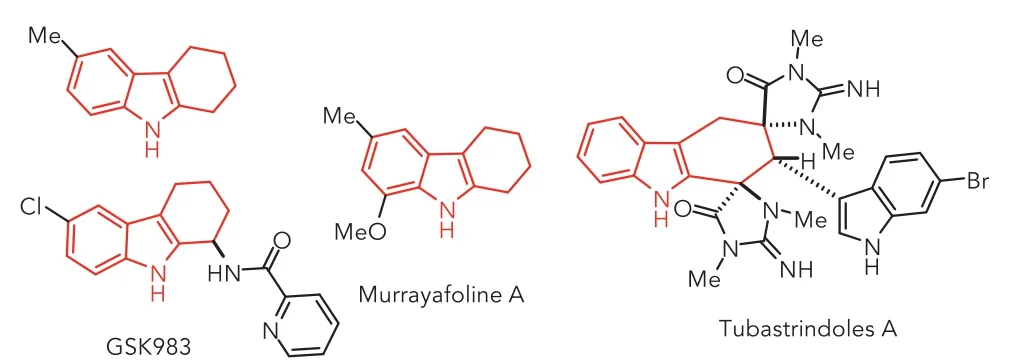
Fig.1 .Natural products and bioactive molecules containing tetrahydrocarbazole unit.
Due to the importance of tetrahydrocarbazoles in organic synthesis and medicinal chemistry, much attention has been devoted to the construction of functionalized tetrahydrocarbazole derivatives in recent years [16–22].Transition-metal-catalyzed cascade ring-opening/cyclization reactions of functionalized cyclopropanes with indole-substituted alkenes or alkynes were developed to construct multi-substituted tetrahydrocarbazoles in good yields(Scheme 1a) [23–25].Moreover, tetrahydrocarbazole derivatives could be synthesizedviaDiels–Alder reaction of indole tethered alkenes with other functionalized alkenes (Scheme 1b) [26–35].Intramolecular Friedel-Crafts alkylation of indole tethered alkenes or tertiary alcohols represented an alternative efficient strategy for the synthesis of tetrahydrocarbazoles, in particular, chiral tetrahydrocarbazole derivatives were obtained when chiral catalysts were employed in those reactions (Scheme 1c) [36-38].Very recently,our group also designed an indole-substituted allylmalonate as a radical acceptor and successfully applied this reagent in the reaction with sodium sulfinates to assemble sulfonylalkyl substituted tetrahydrocarbazoles under electrochemical conditions(Scheme 1d) [39].
On the other hand, sulfonyl chloride is an ideal source of sulfonyl radicalin situgenerated under photoredox conditions[40–45].Inspired by the previous reports on the construction of tetrahydrocarbazoles [16–38] and our continuous interests in this area [39,46,47], we envision that sulfonyl chlorides can be suitable radical precursors under photoredox conditions, which can assemble the target tetrahydrocarbazole frameworkviaa tandem cyclization of our designed indole-substituted allylmalonates [39].Herein, we reported a visible-light-promoted cyclization of indole derivatives with arylsulfonyl chlorides as radical sources (Scheme 1e).This reaction was carried out under mild conditions and afforded the corresponding sulfonylalkyl substituted tetrahydrocarbazoles with a variety of electronically and sterically diverse substituents in good yields.
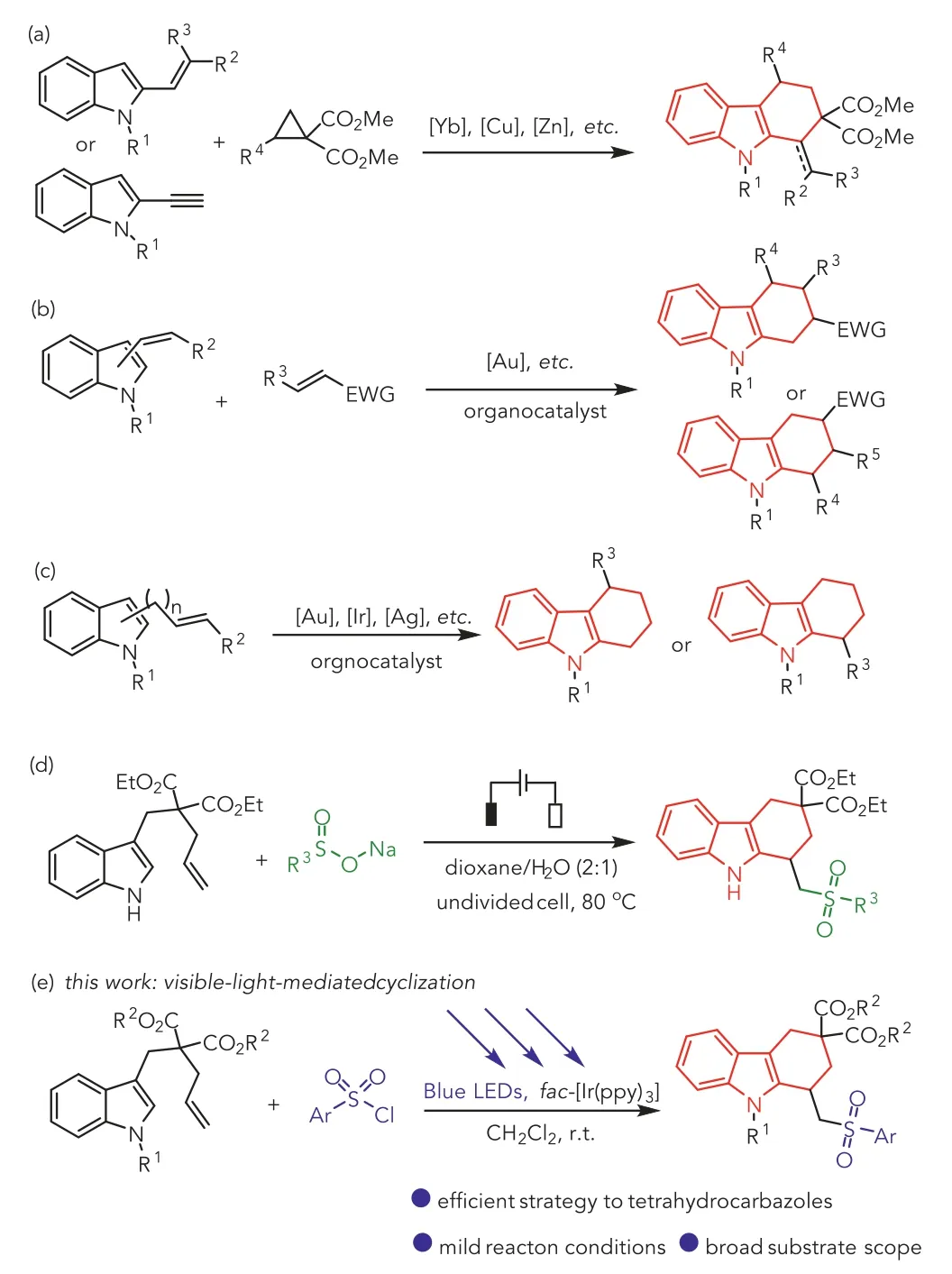
Scheme 1 .Synthesis of tetrahydrocarbazole derivatives.
We commenced our study by carrying out the visiblelight-promoted cyclization of diethyl 2-((1H-indol-3-yl)methyl)−2-allylmalonate 1a with 4-methylbenzenesulfonyl chloride 2a as a model reaction.After an extensive study of reaction parameters(Table 1), we were delighted to find that the reaction catalyzed by a known Ir-photocatalyst in the presence of K2CO3at room temperature provided the corresponding tetrahydrocarbazole product 3aa in 20% yield (entry 1).Encouraged by this positive result, we next tested different inorganic bases with acetonitrile as a solvent in the presence offac-[Ir(ppy)3] (2 mol%).Replacing K2CO3with NaOAc resulted in an improved result, and 36% yield of product 3aa was obtained after 12 h (entry 2).The yield was slightly increased to 45% when KH2PO3was used in the reaction (entry 3).For the reactions with the use of inorganic bases (entries 1–3),the starting material 1a remained in the reaction mixture.Interestingly, organic bases were found to be good choices (entries 4–6), in particular, DIPEA was identified as the most efficient one in terms of reaction outcome (62% yield, entry 6).This is likely because of the better solubility of organic base in acetonitrile.Then,the effects of solvents were also examined and several solvents including CH2Cl2, DMF, THF, dixoane, and CHCl3were used as media in this transformation.The reaction in dichloromethane proceeded smoothly to afford the desired product 3aa in a comparable yield(63% yield, entry 7).The results from DMF, THF, dioxane and CHCl3indicated clearly that dichloromethane still was the most effective one (entries 8–11).Subsequently, further optimization of reaction conditions by variation on the loading amount of coupling partner 4-methylbenzenesulfonyl chloride 2a was conducted.The reaction with the use of 2.0 equiv.of 4-methylbenzenesulfonyl chloride 2a also proceeded very well and furnished the product 3aa in 56% yield (entry 13), while decreasing the loading amount of 2a to 1.5 equiv.led to a lower yield (46%, entry 12).Considering the reaction efficiency and operation convenience, we examined the visible-light promoted cyclization reaction under air.It is pleased that the reaction also occurred and the starting material 1a was consumed within 7 h to afford the corresponding tetrahydrocarbazole product 3aa in a good chemical yield (66%, entry 14).This result shows clearly that the reaction is not particularly sensitive to air.Finally, the yield could be further increased to 80% when the loading amount of DIPEA was increased to 4.0 equiv., and the conversion of the starting material completed within 3 h (entry 15).
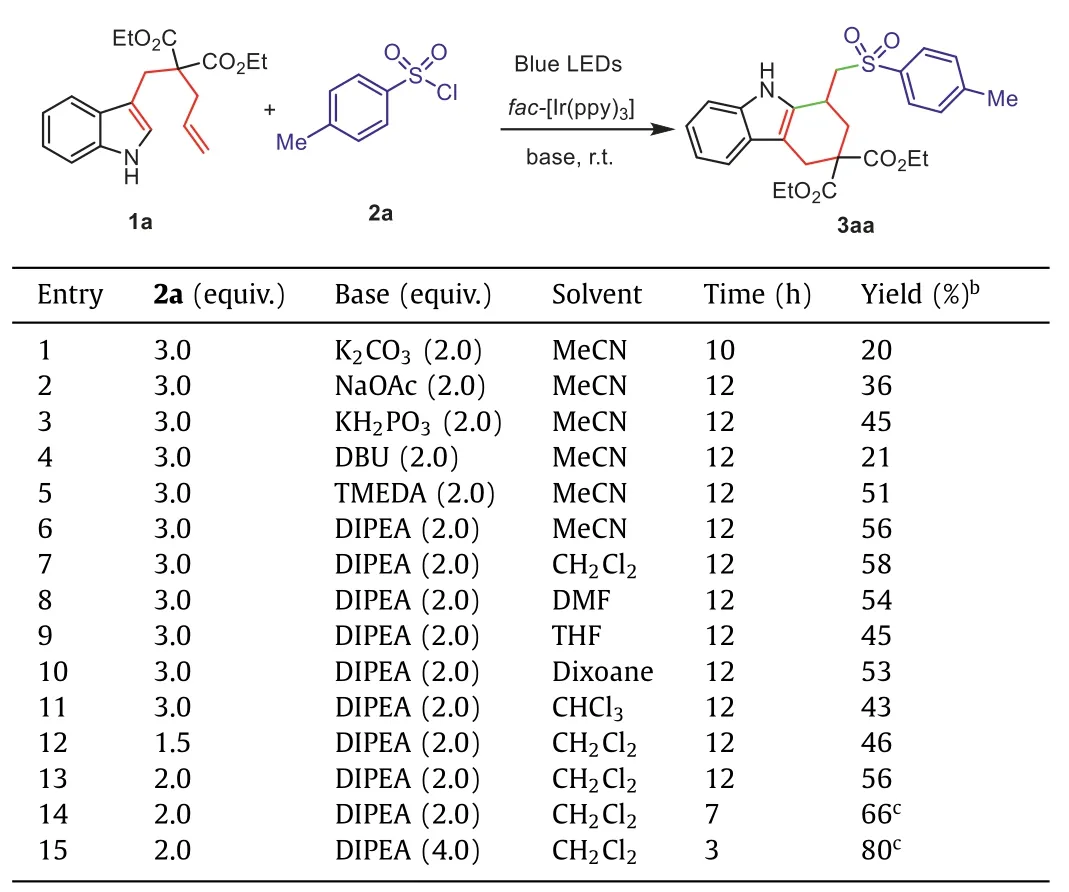
Table 1 Optimization of the reaction conditions.a
With the optimal reaction conditions in hand, the substrate scope of this visible-light-promoted reaction with regard to arylsulfonyl chloride 2 was evaluated (Scheme 2).As demonstrated in Scheme 2, a wide scope of sulfonyl chlorides was effective and provided the functionalized tetrahydrocarbazoles products 3 in moderate to good yields.The electronic property of substituents on aryl ring of sulfonyl chlorides 2 shows an obvious effect on the reaction outcome.Sulfonyl chlorides bearing different substituents,such as methyl (2a), methoxyl (2d), ethyl (2n) andn-propyl (2o)could well participate in this visible-light-mediated reaction affording the corresponding product 3 in good yields (65%−80%).Lower yields were obtained for the arylsulfonyl chlorides containing electron-withdrawing groups (3ae–3aj, 43%−61% yields).Even no desired tetrahydrocarbazoles products 3ac was obtained when 4-cyanobenzenesulfonyl chloride was used.On the other hand, an obvious steric hindrance effect was observed for this reaction.Thepara- andmeta-substituted phenylsulfonyl chlorides were well tolerated in this reaction.On the sharp contrary, almost no desired product formed with most of the starting materials remained for the substrates containingortho-substituted phenyl moiety (2f, 2l,2m).
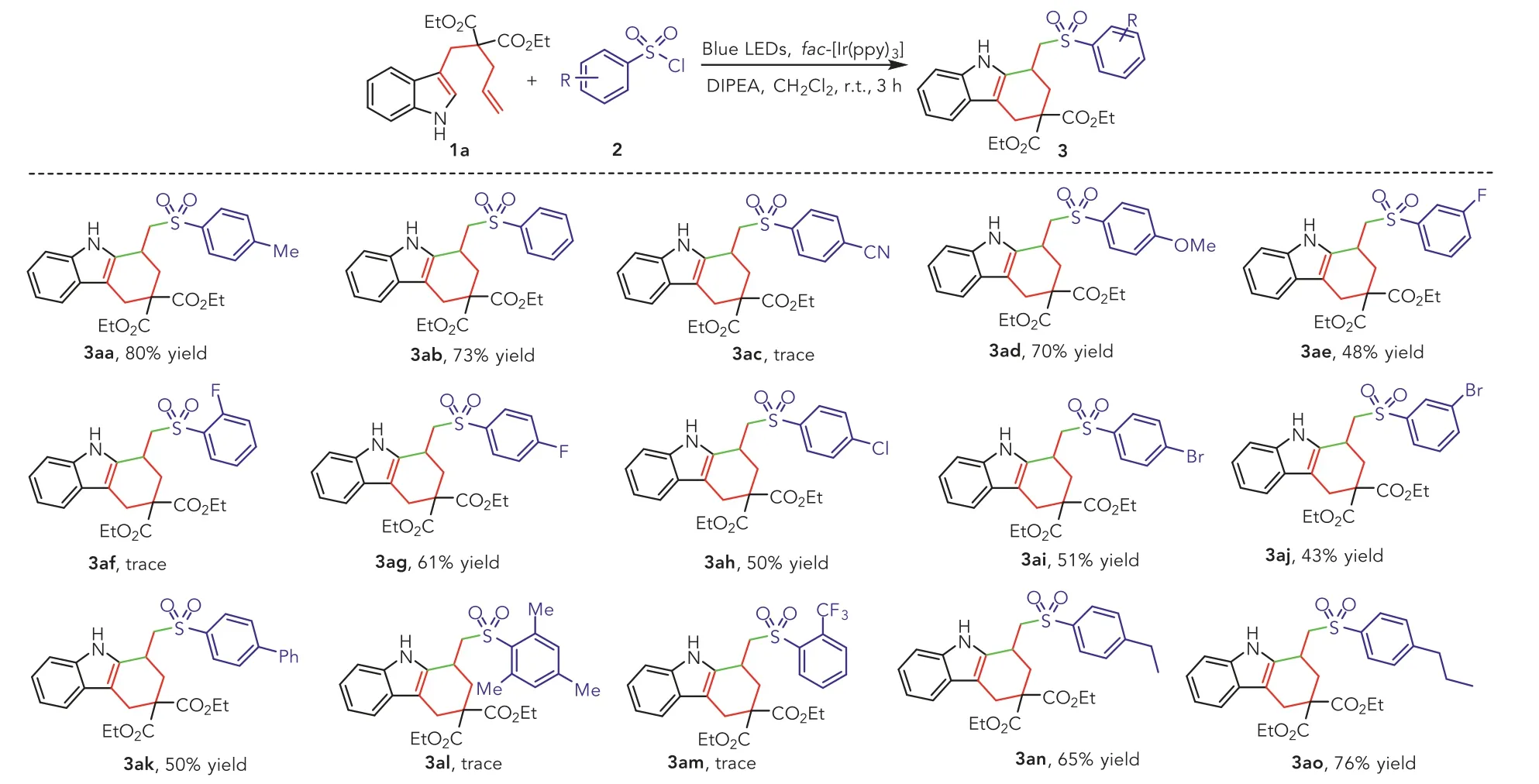
Scheme 2 .Substrate scope of various arylsulfonyl chloride.Reaction conditions: Indole derivative 1a (0.1 mmol), sulfonyl chloride 2 (0.2 mmol), DIPEA (0.4 mmol), fac-[lr(ppy)3] (2 mol%), DCM (2 mL), under air in the presence of 4.5 W blue LEDs for 3 h.Isolated yields based on indole derivative 1a.
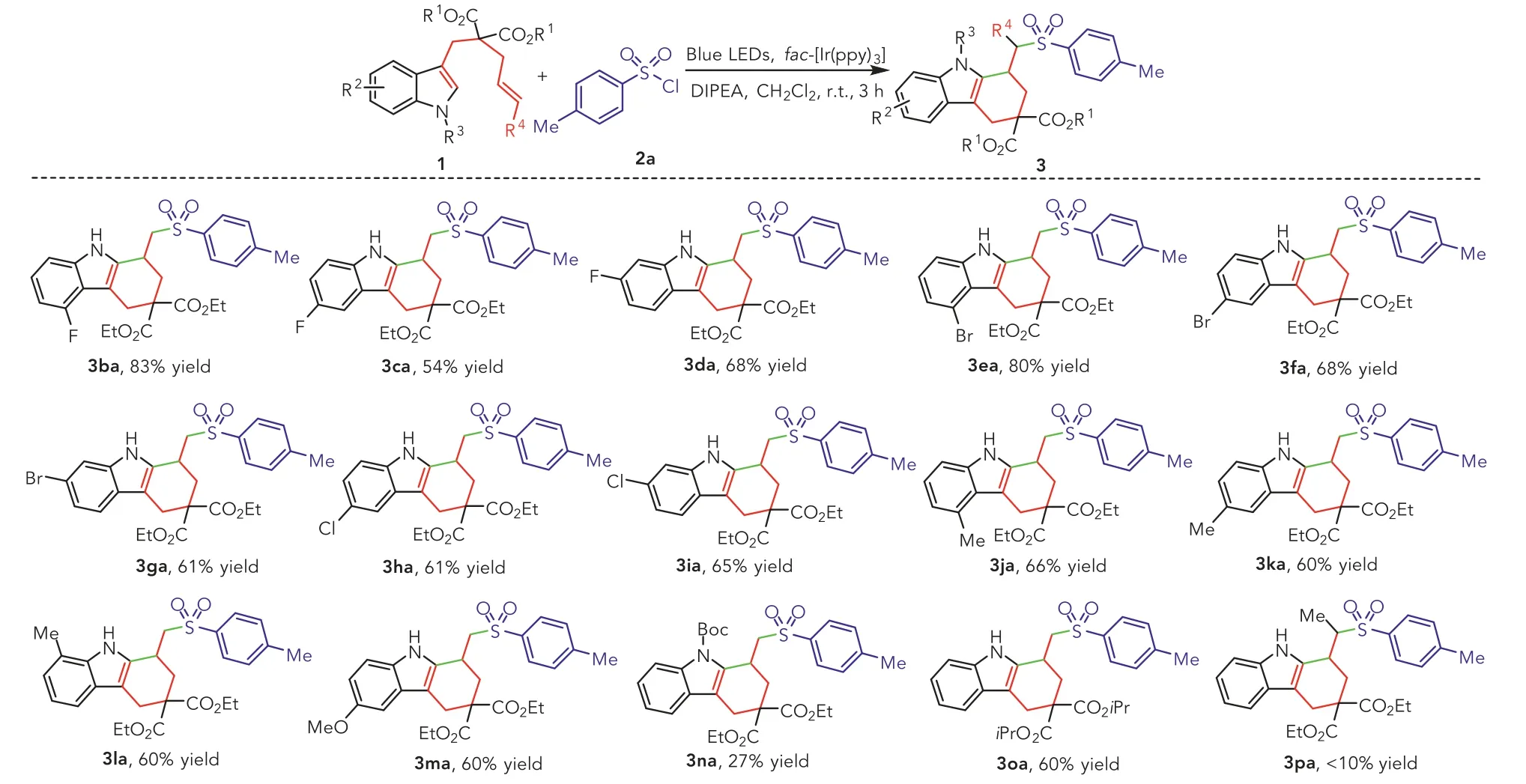
Scheme 3 .Substrate scope of various indole derivatives.Reaction conditions: Indole derivative 1 (0.1 mmol), 4-methylbenzenesulfonyl chloride 2a (0.2 mmol), DIPEA(0.4 mmol), fac-[lr(ppy)3] (2 mol%), DCM (2 mL), under air in the presence of 4.5 W blue LEDs for 3 h.Isolated yields based on indole derivative 1.
After getting the above inspiring results, the substrate scope with regard to indole substituted alkenes 1 was subsequently examinedviareaction with 4-methylbenzenesulfonyl chloride 2a under the optimized conditions (Scheme 3).Interestingly, variation in the electronic properties on the aryl ring of indole moiety did not show an obvious effect on the reaction efficiency.The substrates featuring both electron-donating groups (methyl, methoxyl,1j-1m) and electro-withdrawing groups (fluoro, bromo, chloro, 1b-1i) were suitable for this reaction resulting in the corresponding product 3 in 60%−83% yields.Fortunately, different substituents could be installed at any position of phenyl ring of indole moiety, and substrates 1 were successfully converted into the corresponding tetrahydrocarbazole product 3 under the standard conditions.To further extend the scope of the indole derivatives, a compound 1n withN-Boc protecting group was tried to react with sulfonyl chloride 2a.The reaction did happen and provided the corresponding product 3na in 27% yield.Besides ethyl malonate, the substrate containing isopropyl malonate structural unit also was tried in the reaction, which was well tolerated affording the corresponding tetrahydrocarbazole product 3oa in 60% yield.Moreover,the steric effect of this reaction was examined by introducing a methyl group at the terminal position of C–C double bond (1p).Unfortunately, it is not a suitable substrate for this reaction, and almost no desired product 3pa was isolated.Compared with the previous electrochemical reaction with sulfinates [39], this visiblelight-promoted reaction shows wide substrate scope and improved reaction efficiency.

Scheme 4 .Large-scale synthesis.
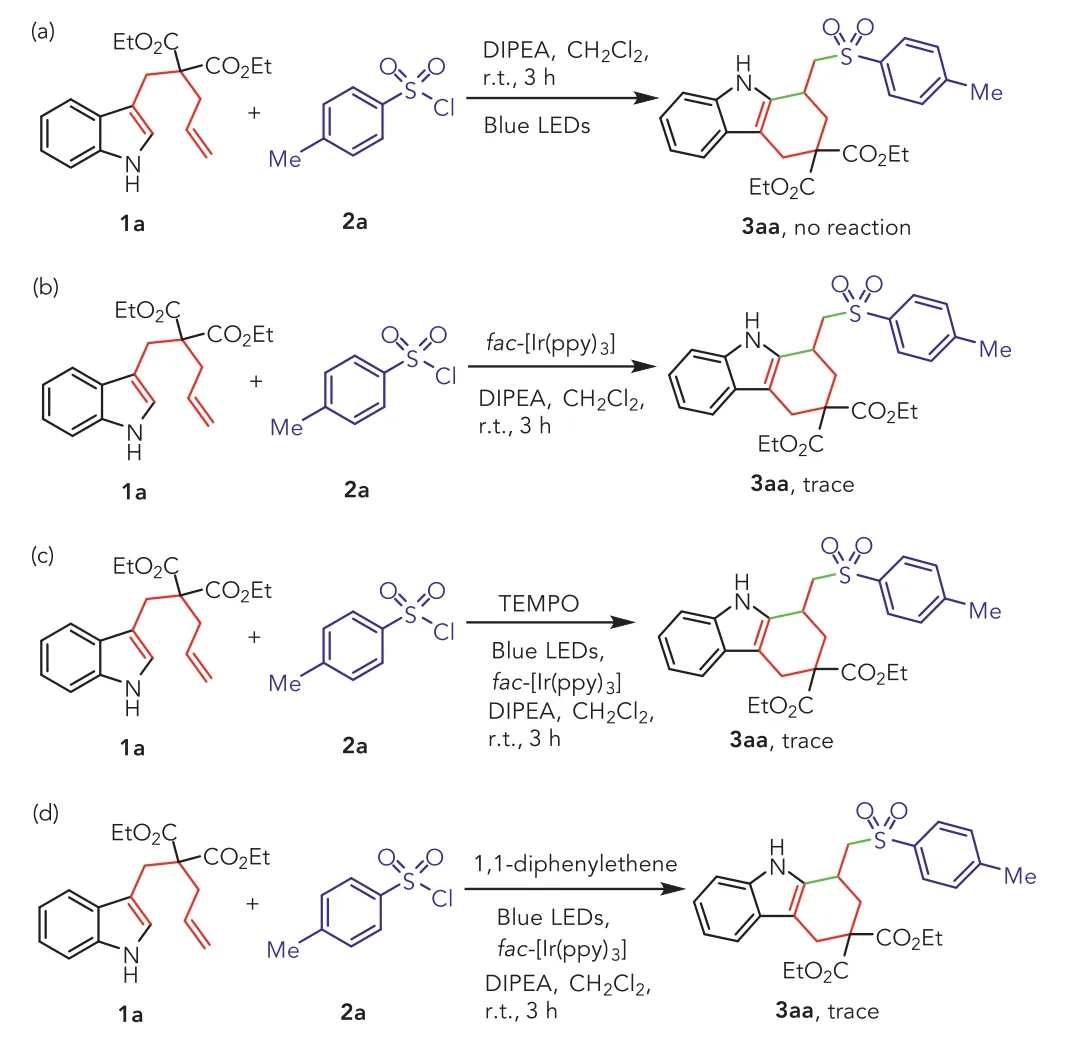
Scheme 5 .Control experiments.
To further demonstrate the utility of this strategy, a large-scale reaction of the model substrate 1a with 4-methylbenzenesulfonyl chloride 2a was performed under the standard conditions (Scheme 4).It was pleased that the reaction also proceeded smoothly when the scale was enlarged from 0.1 mmol to 3.0 mmol.As highlighted in Scheme 4, 860 mg of the desired product 3aa was obtained with only slight erosion of the reaction yield (64%).
To get insight into the reaction mechanism, several control experiments were conducted.First, the reaction of model substrates 1a and 2a was conducted without the use of photocatalyst, and no reaction happened with almost all the starting materials remaining (Scheme 5a).Also, almost no desired product 3aa was observed when the reaction was carried out in dark (Scheme 5b).These results clearly indicate light and photocatalyst are essential for this transformation.Then, a reaction with the addition of 2,2,6,6-tetramethyl-1-piperidinyloxy (TEMPO), a radical scavenging reagent, was performed under the standard conditions, which was totally suppressed and almost no desired product 3aa was observed (Scheme 5c).The same result was obtained when the addition of 1,1-diphenylethene (Scheme 5d).These results suggest that this reaction may contain radical intermediates in the transformation.
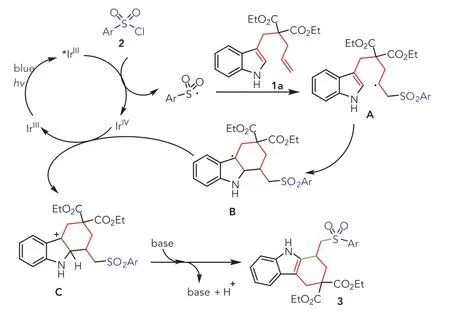
Scheme 6 .Proposed mechanism.
In light of those above mechanistic studies and related literatures [39–45], a possible mechanism was proposed for this visiblelight-initiated radical reaction (Scheme 6).First,fac-[Ir(ppy)3] is irradiated by blue LED light to give the excited-state∗fac-[Ir(ppy)3].Then, single electron transfer (SET) reduction of arylsulfonyl chloride 2 by the excited-stated photocatalyst to generate sulfonyl radical with the release of chloride anion.Subsequently, the trap of the sulfonyl radical by C–C double bond of substrate 1a forms the radical intermediate A, which undergoes intramolecular cyclization at C-2 position of indole moiety resulting in the intermediate B.The intermediate B is further oxidized by the highly covalent photocatalyst IrIVto form the cationic intermediate C with the regeneration of ground-state photocatalyst for the next catalytic cycle.Finally, deprotonation of the intermediate C happens in the presence of DIPEA affording the corresponding functionalized tetrahydrocarbazole 3.
In summary, a visible-light-promoted cascade reaction of 2-indole-2-allylmalonates with arylsulfonyl chlorides has been developed.The reaction was carried out under mild conditions and tolerated a wide scope of indole-substituted alkenes and sulfonyl chlorides to afford a rich library of multi-functionalized tetrahydrocarbazole products with up to 83% yields.This reaction represents a new strategy for the radical cyclization of this type of dienes,and also provides a valuable vista for the preparation of high-value tetrahydrocarbazole derives.
Declaration of competing interest
The authors declare that they have no known competing financial interests or personal relationships that could have appeared to influence the work reported in this paper.
Acknowledgments
We gratefully acknowledge the financial support from the National Natural Science Foundation of China (No.21761132021).Qin Lan Project from Jiangsu Province for J.Han is also acknowledged.
Supplementary materials
Supplementary material associated with this article can be found, in the online version, at doi:10.1016/j.cclet.2022.03.038.
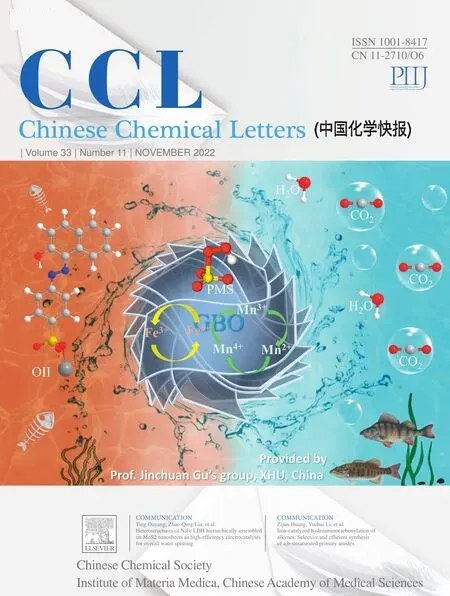 Chinese Chemical Letters2022年11期
Chinese Chemical Letters2022年11期
- Chinese Chemical Letters的其它文章
- Distinct structural characteristics define a new subfamily of Mycoplasma ferritin
- Insight into the in vivo fate of intravenous herpetrione amorphous nanosuspensions by aggregation-caused quenching probes
- A TICS-fluorophore based probe for dual-color GSH imaging
- Toward accurate and efficient dynamic computational strategy for heterogeneous catalysis: Temperature-dependent thermodynamics and kinetics for the chemisorbed on-surface CO
- Ruthenium-modified porous NiCo2O4 nanosheets boost overall water splitting in alkaline solution
- Oral colon-targeted mucoadhesive micelles with enzyme-responsive controlled release of curcumin for ulcerative colitis therapy
